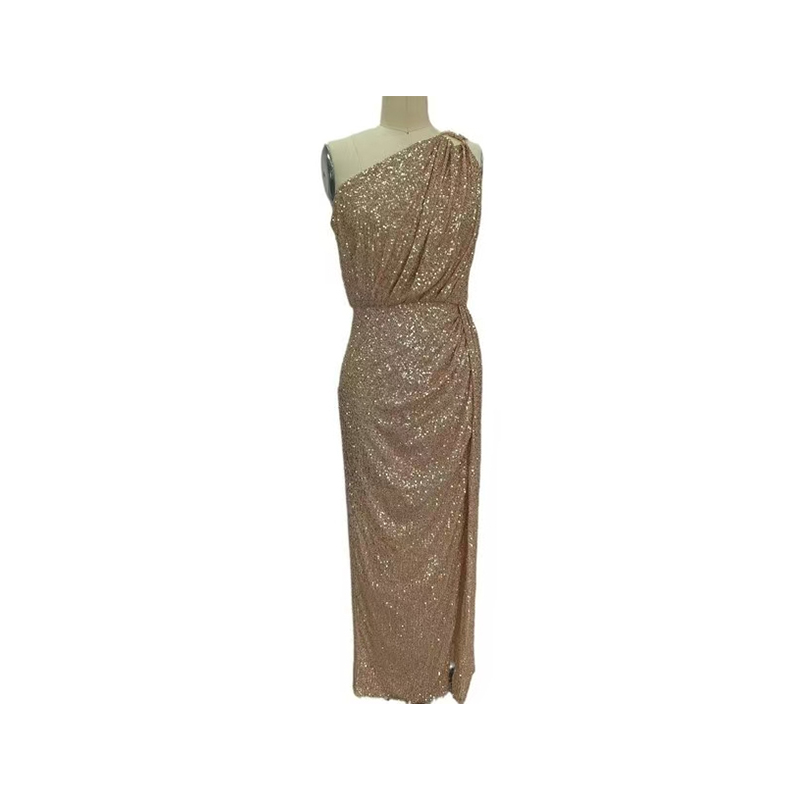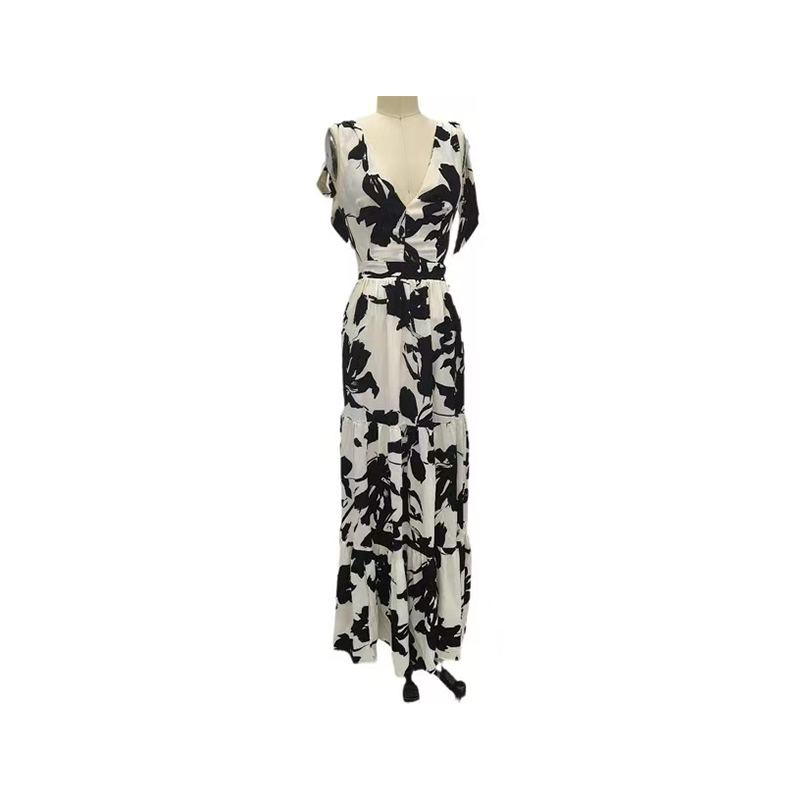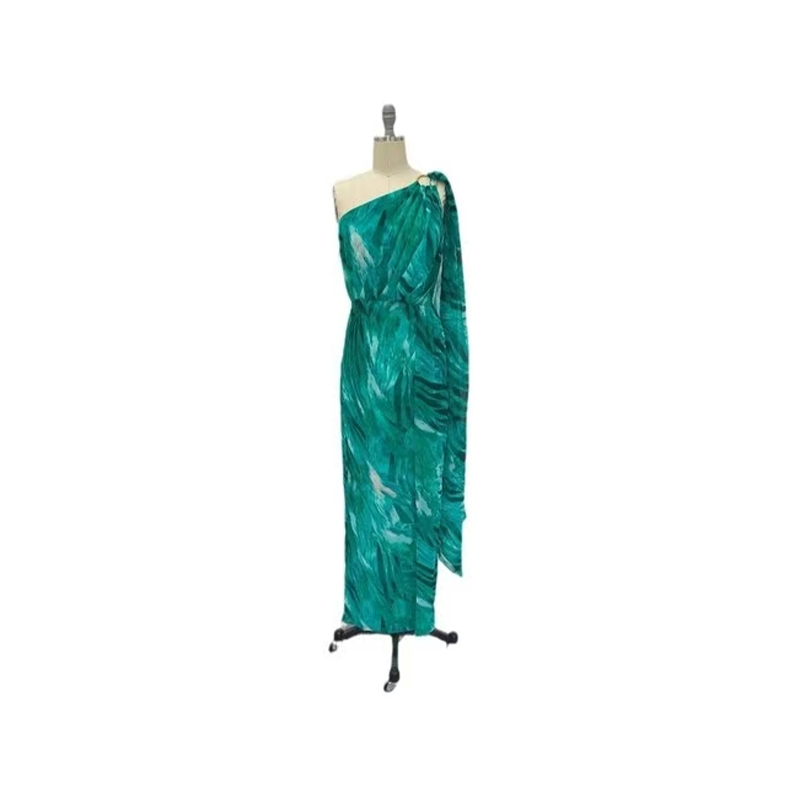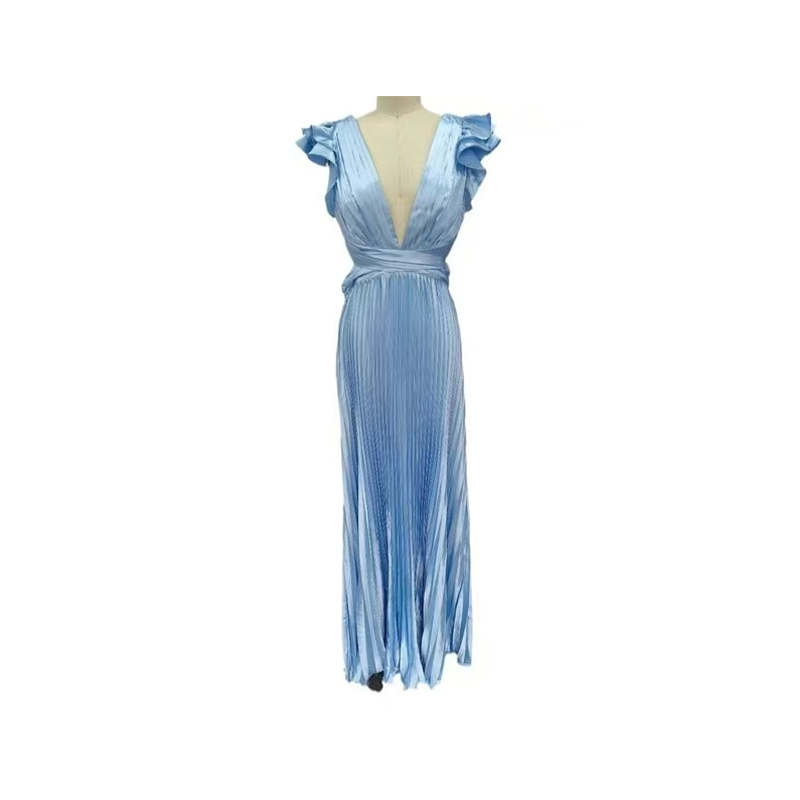How to ensure the stitching of women's retro wide-leg denim jumpsuit is strong and beautiful?
Release Time : 2025-09-23
The stitching process for a women's retro wide-leg denim jumpsuit must balance strength and aesthetics. This requires a complete technical loop, from stitch type selection and stitch combination to equipment configuration and detailed processing. For example, the core of the denim double-stitching process lies in the use of two needles to simultaneously create two parallel and tightly packed seams. This structure not only improves tear resistance by distributing the force between the two threads, but also creates a visual focal point through the contrast of contrasting colors (such as khaki) with the denim blue, making the seam itself a decorative element. In practice, a dedicated denim sewing machine is used with a double-needle sewing needle to ensure uniform stitch spacing. Key areas, such as the yoke and side seams, are particularly important. Overlocking is used to conceal raw edges, and then double topstitching is used to reinforce the fabric, preventing unraveling and enhancing structural stability.
The four-needle, six-thread technique is specifically designed for the thick fabric of retro wide-leg denim jumpsuits. Four needles and six threads interweave to create a network structure. This technique distributes tension over a wider area when sewing high-stress areas like the crotch and elbows, avoiding the localized stress that can cause breakage with traditional three-needle, five-thread stitching. For example, the back crotch seam utilizes a double chain stitch combined with a buried seam. This seam-biting technique ensures the seam exceeds standard requirements and maintains its shape even after repeated stretching. For closed areas like cuffs and cuffs, a combination of chain stitch and hidden thread is used. Double chain stitching is first used to prevent unraveling, and then hidden thread is used to secure the hem. This ensures that the seams are concealed within the fabric, leaving only a neat visible seam pattern.
The choice of stitching directly impacts the seam quality. The hemming process uses an overlocking machine to enclose the raw edges of the seams within a thread sleeve, leaving no excess thread on the reverse side and only a fine, dense seam on the front. This makes it ideal for areas requiring a delicate finish, such as pockets and plackets. The back-and-forth seam uses two-way stitching to completely wrap the raw edges, creating a tubular structure. While this technique is time-consuming, it completely eliminates the risk of fabric raveling and is particularly suitable for joining thin denim with thicker fabrics. For decorative seams, such as the colored topstitching on the side of a trouser leg, a high-low presser foot is used to assist in sewing. By maintaining a fixed distance between the presser foot edge and the fabric, each stitch should be within 0.1 cm of the reference edge to avoid skewing and affecting the overall aesthetic.
Equipment configuration is essential for ensuring seam quality. Denim sewing machines should be equipped with a coarse needle of size 14 or higher to penetrate multiple layers of fabric without thread breakage. The stitch density should also be adjusted to at least 12 stitches per 3 cm to ensure a secure seam. For thicker fabric areas like trouser legs and cuffs, a hammer should be used to thin the seam to reduce fabric buildup and prevent skipped stitches due to uneven thickness during sewing. Furthermore, the hidden needle method offers unique advantages when repairing untied threads. By inserting the needle from the inside of the fabric, threading along the original needle eye, and then concealing the thread end within the fabric, the repair is virtually invisible. This technique is also suitable for invisible reinforcement of areas such as plackets and trouser pockets.
Details determine the quality of the finished product. To create a trouser pocket, a pattern is first pressed to form the three-dimensional pocket shape, and then the decorative pattern is secured with visible stitching to ensure the pocket opening does not deform or twist. Back patch pockets are pre-folded into shape using a pattern, and then the yarn edges are secured with zigzag stitching to prevent separation. For joints, such as the connection between the yoke and the trouser panel, overlocking is used to hide raw edges, and double visible stitching is used to emphasize the structural lines and create a clearer silhouette.
The stitching process for the women's retro wide-leg denim jumpsuit requires a fusion of functional sewing and decorative design. A balance of strength and aesthetics is achieved through the appropriate selection of stitch types, optimal stitch combinations, dedicated equipment, and meticulous attention to detail. This technique not only extends the service life of the clothing, but also enhances the ruggedness and individual style of the denim clothing through the styling language of the stitching itself.







